10/07/20
K-State Current - October 7, 2020
K-State Current is a weekly news update for the Kansas Board of Regents to apprise the Regents on a few of the many successes and achievements made by K-State faculty, staff and students.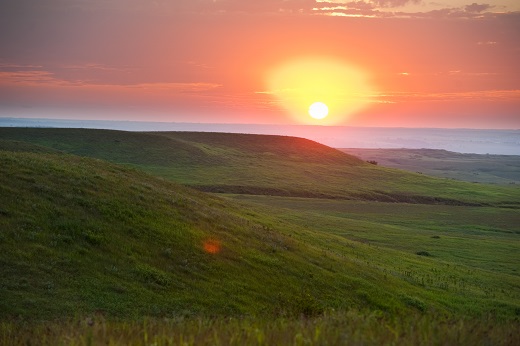
K-State News
Window dressing: New Beach Museum of Art installation best viewed from the outside
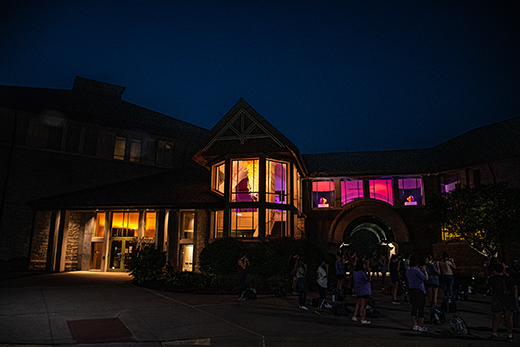 It's been said the eyes are the window of the soul. At the Marianna Kistler Beach Museum of Art, windows are now eyes that reveal the museum's heart and soul: works of art.
It's been said the eyes are the window of the soul. At the Marianna Kistler Beach Museum of Art, windows are now eyes that reveal the museum's heart and soul: works of art.
With the Kansas State University art museum temporarily closed to the public, staff members have turned the museum "INSIDE OUT" to bring the campus and community some much-needed visual relief. "INSIDE OUT" offers new, innovative window installations that can be viewed from outside of the Beach Museum of Art, at 701 Beach Lane, near 14th Street and Anderson Avenue.
"Artworks of all types, including one in the form of a neon sign, are colorfully lit to offer tantalizing glimpses of the objects inside," said Linda Duke, Beach Museum of Art director.
"We welcome curious viewers to walk around the museum's exterior to view these displays of works of art from the museum’s collection," Duke said. "'INSIDE OUT' is available at any time of day but is especially stunning at twilight when the lighted windows glow warmly. Don't forget to bring binoculars to enhance your viewing experience!"
Signs nearby provide details about each artwork and links to additional information via Smartify, a free phone app available on the Apple Store or the Google Play Store.
A video of "INSIDE OUT" can be viewed on at youtu.be/uLYAeWwuzXU.
Duke said the museum would also love to know what viewers think about "INSIDE OUT" and encourages them to tag the museum — BeachMuseumofArt on Facebook, BeachMuseum on Twitter and beachmuseum on Instagram — when sharing photos of the artful installations on social media.
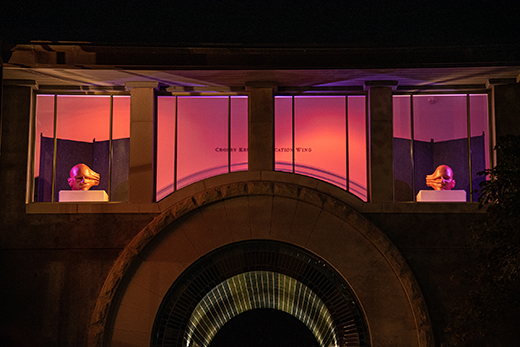
"INSIDE OUT," an offering of window installations, at Kansas State University's Beach Museum of Art.
K-State team eyes facial recognition technology for cattle
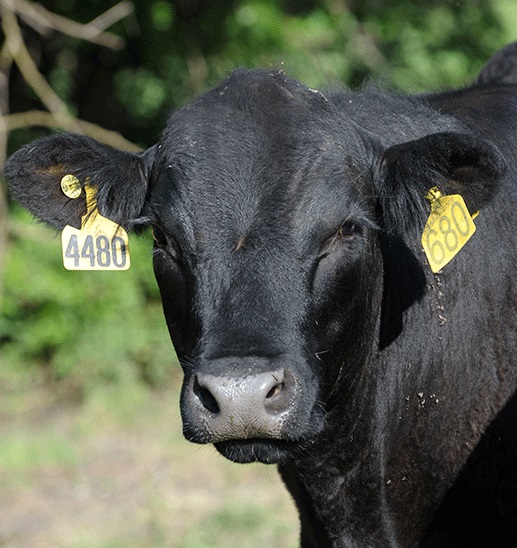 If you’ve stared one cow in the face, you’ve seen them all … right?
If you’ve stared one cow in the face, you’ve seen them all … right?
New technology being developed at Kansas State University is likely to debunk that thought, capitalizing on the power of artificial intelligence to build a database of facial recognition technology for the cattle industry.
In other words, just like humans, each cow in the herd has a set of unique facial features that modern technology can scan and later use to track the animal throughout its life.
“We’re talking about a system here that has an incremental cost that is close to zero, and nobody would be (forced) to use it,” said KC Olson, a beef cattle scientist with K-State Research and Extension who has helped to develop the idea. “But there would be economic incentives provided by the beef industry to participate.”
Listen to an interview with KC Olson by Eric Atkinson on the weekday radio program, Agriculture Today
Human facial recognition is becoming more common in secure locations, such as airports. And, humans can log into their computers or smartphones simply by looking at a screen.
“The technology is based on the geometry of the human face,” Olson said. “It uses a bunch of intricate biometric measurements to put a permanent identification on a human being so that later on, when that person needs to get on a flight or something similar, the technology will identify who they are. For humans, that technology is capable of nearly 100% accuracy.”
“Our thinking is, ‘why can’t we have something like that for beef cattle, which could then be used to create a national animal disease traceability system?’” Olson said. “The need for such a system has never been greater. We need this extra layer of protection for our industry against a foreign animal disease or … possible malfeasance by somebody who’s an enemy of this nation.”
Olson and a group of K-State experts in computer engineering, veterinary medicine and animal science began discussing the idea late in 2019. While much of the world slowed down during the COVID-19 pandemic, they were busier than ever putting together the intricacies of facial recognition for cattle.
“Initially, we made short videos of 1,000 feeder cattle that were restrained in a chute, taking a panoramic view of each calf’s head,” Olson said.
From the videos, computer engineers parsed individual images of each cow’s head and uploaded it to a neural network – a form of artificial intelligence that is self-learning. Once the pictures are loaded, Olson said, the system “teaches itself which of the biometric measurements are critical.”
Recently, the K-State team tested the reliability of the network, feeding images of cattle already in the system, and some that had not yet been entered. Olson said the technology was accurate 94% of the time.
“Given the fact that this was a really small data set, there are some risks,” he said. “You can actually over-train a neural network so that it gets really good with the database that was used to create it, but it’s a little helpless when you give it new material.
“The major limitation right now is the size of the database. The bigger it becomes – in other words, the smarter the neural network is – the higher the accuracy becomes. Achieving buy-in from the beef industry is absolutely essential to make this as robust as possible.”
K-State is working with Kansas City-based company Black Hereford Holdings to build a smartphone app called Cattletracs, which will allow producers to submit pictures of their cattle. The app is due to be released soon, though its full capability is not likely to be in place for several months, Olson said.
“For producers who don’t want anything to do with a national disease traceability system, that’s fine. Nobody is compelled to participate,” Olson said. “An animal could be read into the database anytime, such as at the first point of sale after leaving its ranch of origin or anytime after that.
“We do know that there can be economic incentives for animals with desired traits, and this system could help with that. But we would potentially get a lot more, including that all-critical element of biosecurity for our industry. The thinking is that this will eventually be applicable to most mammalian livestock species, including hogs and dairy cattle.”
K-State Faculty Highlights
Pinkall, Kansas City Chorale debut at No. 1 on Billboard Charts
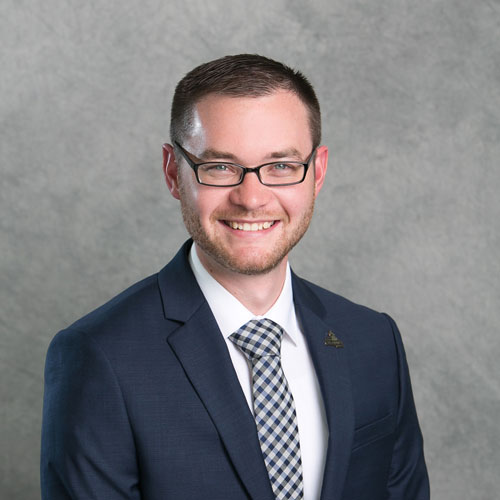 The world-premiere recording of Alexander Kastalsky's "Requiem" debuted atop the Traditional Classical Billboard chart this week. The album was recorded live at Washington National Cathedral at a performance commemorating the 100th anniversary of the World War I Armistice and released by Naxos Records on Aug. 28.
The world-premiere recording of Alexander Kastalsky's "Requiem" debuted atop the Traditional Classical Billboard chart this week. The album was recorded live at Washington National Cathedral at a performance commemorating the 100th anniversary of the World War I Armistice and released by Naxos Records on Aug. 28.Listen to the album today at kcchorale.org.
Engineering professor's NSF-funded work could have use in robotics, smart devices
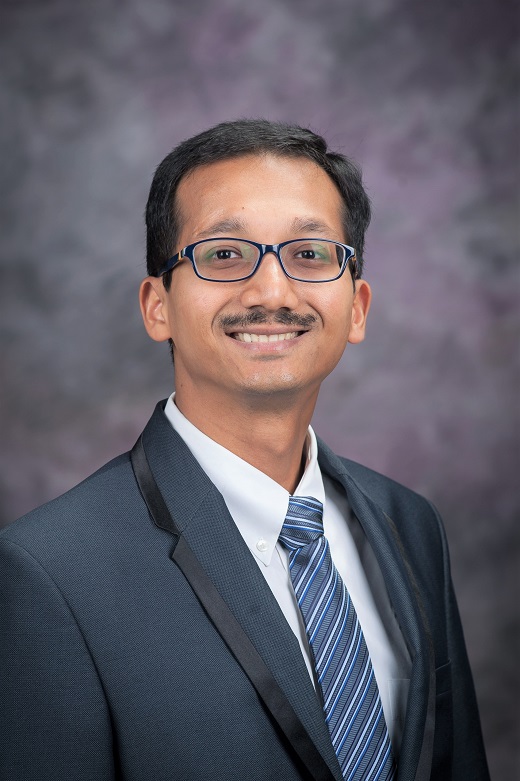 The National Science Foundation has awarded Raj Kumar Pal, assistant professor in the Alan Levin Department of Mechanical and Nuclear Engineering at Kansas State University, more than $300,000 for his work, "Toward mechanical resonators with zero leakage using elastic meta-structures."
The National Science Foundation has awarded Raj Kumar Pal, assistant professor in the Alan Levin Department of Mechanical and Nuclear Engineering at Kansas State University, more than $300,000 for his work, "Toward mechanical resonators with zero leakage using elastic meta-structures."
The three-year grant will support research to generate new knowledge related to mechanical resonators — structures that vibrate at specific frequencies and find widespread application across multiple-length scales. Examples include communication devices, vibration isolators and energy harvesting.
"Existing resonators suffer from intrinsic limitations due to leakage of energy into the surrounding structure, thus offering limited or no means to release energy at will," Pal said. "This research will introduce and investigate a class of artificially engineered structures or meta-structures to overcome these limitations."
Results of Pal's work will open avenues for elastic wave-based signal processing with potential applications in robotics and Internet of Things devices.
"It will also allow us to train graduate students at K-State on cutting-edge research in meta-structures," Pal said. "The accompanying summer research and outreach activities for undergraduates will increase awareness of this emerging area of study among both current and prospective K-State students."
K-State Student Highlights
Graduate student awarded NBAF Scientist Training Program fellowship
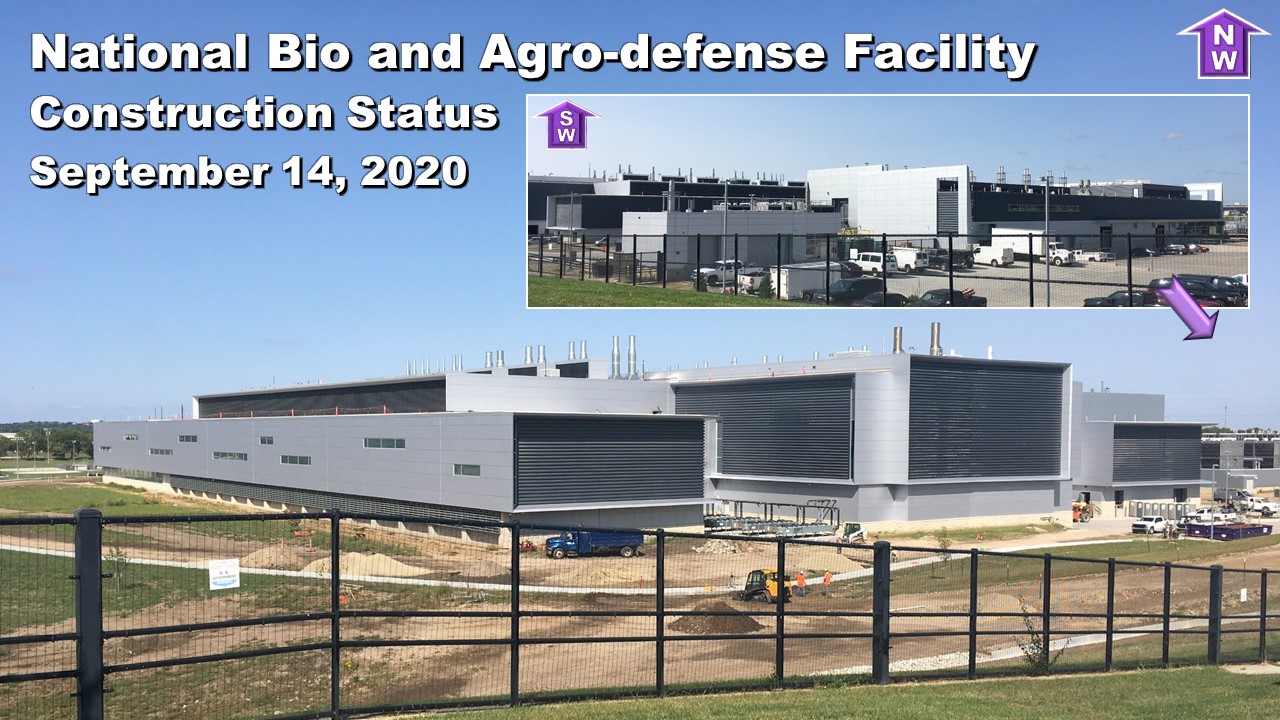 Konner Cool, doctoral student in pathobiology, has been awarded a National Bio and Agro-Defense Facility Scientist Training Program, or NSTP, Ph.D. fellowship. This fellowship will last four years and focuses on building the necessary technical and subject matter expertise to support the Foreign Animal Disease Diagnostic Laboratory, or FADDL, at the new National Bio and Agro-Defense Facility, known as NBAF, in Manhattan.
Konner Cool, doctoral student in pathobiology, has been awarded a National Bio and Agro-Defense Facility Scientist Training Program, or NSTP, Ph.D. fellowship. This fellowship will last four years and focuses on building the necessary technical and subject matter expertise to support the Foreign Animal Disease Diagnostic Laboratory, or FADDL, at the new National Bio and Agro-Defense Facility, known as NBAF, in Manhattan.
"K-State's partnership with the Animal and Plant Health Inspection Service for training personnel to work in NBAF offers a fabulous opportunity for our students," said Beth Montelone, associate vice president for research.
Cool says he is excited to use this fellowship to focus on the development of animal models for COVID-19 and developing and validating SARS-CoV-2 specific diagnostic test systems for livestock and companion animals. This will include molecular test systems for detection of viral RNA, serological test systems for detection of virus-specific antibodies, and test systems for the detection of SARS-CoV-2 antigen.
"Ultimately, the goal is to create highly sensitive and specific assays that can be translated into field-deployable or point-of-care tools for humans, veterinarians and pet owners," Cool said.
His work at the Biosecurity Research Institute, or BRI, with high-consequence, emerging and zoonotic infectious diseases, such as SARS-CoV-2, allows the team to play a role in timely responses to emerging threats and developing impactful tools that can be translated into the field within the U.S. and internationally.
"This award will not only assist Konner with his educational and living expenses but will provide him excellent opportunities to enhance his research skills and knowledge, and prepare him for an exciting career in Foreign Animal Disease Diagnostic Laboratory at NBAF," said Carol Shanklin, dean of the Graduate School and professor of food, nutrition, dietetics and health.
Cool's previous work experience with foreign animal disease research and focus on serological and molecular diagnostics and helped to qualify him for this fellowship.
"We are excited for Konner and his mentor, Dr. Richt, on his selection for the NSTP fellowship," said Frank Blecha, university distinguished professor and associate dean for research in the College of Veterinary Medicine. "He joins seven other NSTP fellows in the college in the preeminent training program in the nation for future foreign animal disease scientists. Not only does the NSTP fellowship relieve the financial burden of graduate school and in some cases veterinary school, but it also brings great prestige to K-State and the College of Veterinary Medicine. Importantly, the program generates homegrown colleagues at NBAF, which will facilitate collaborative interactions long into the future."
"I am incredibly thankful for this opportunity and appreciate all of the support from leadership at K-State and guidance provided by my mentors and co-workers," Cool said. "Having both the BRI and NBAF as part of our community provides so many excellent opportunities for those interested in pursuing careers in foreign animal and zoonotic disease research."